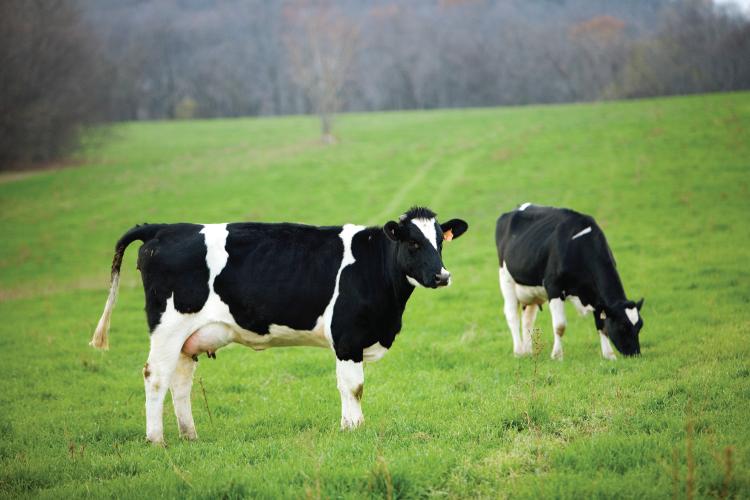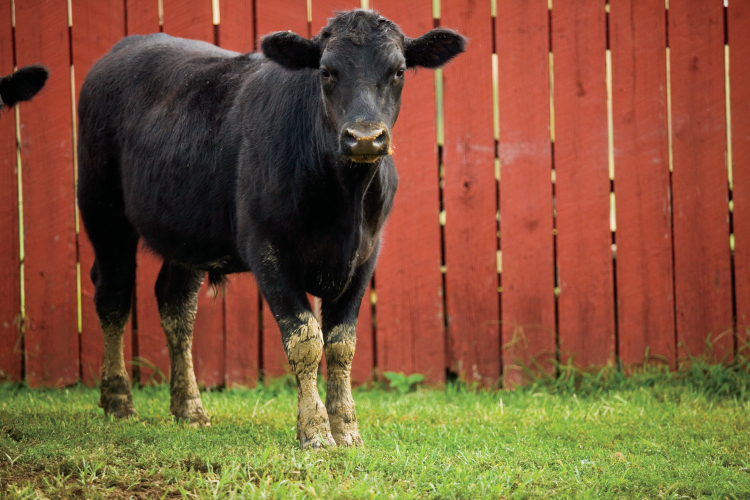Home > Wisconsin > Wisconsin Crops & Livestock > Booming Bovines
Booming Bovines
In partnership with: Wisconsin Department of Agriculture, Trade and Consumer Protection.
Wisconsin may be best known for its successful dairy industry, but the same elements that make the milk business flourish also make for a thriving and growing beef cattle sector. In fact, cattle farmer Terry Quam says Wisconsin is one of the most ideal locations for the industry.
“This state has a diverse landmass, from the southern counties bordering Illinois all the way up to the tip, and an incredible ability to grow forage,” Quam says. “This creates untillable land on every farm, which is easily converted for beef cattle. All that land that can’t be used for anything else is perfect for raising cows.”
Quam and his family own and operate Marda Angus Farms in Lodi. Seventy-two years and four generations later, what started as a 4-H project now includes 120 purebred Angus cows along with 900 acres of crop ground.
“We’re always changing how we do things,” Quam says of his family farm’s success over the years. “Being able to change your operation as the industry changes is important.”
The First Conservationists
The state’s beef industry – ranked 12th in the U.S. for meat production – continues to evolve and grow largely based on its ability to recycle the outputs of other agriculture sectors in Wisconsin. The state is home to many food processing and ethanol plants, the byproducts of which can be used for beef cattle feed.
“We benefit from these other industries, which allows the beef cattle business to be independent and do a lot with very little inputs,” says Quam, who also serves as legislative coordinator for the Wisconsin Cattlemen’s Association. “Cows don’t require the barns or the infrastructures that other livestock need. They really just need a field and feed; they’re extremely adaptable.”
Quam calls beef cows the “first conservationists” because of this ability to adjust to the environment. “They know how to take care of themselves. Beef cows can change their diet fairly rapidly if they need to, so if we find a more economic way to feed them or simply run out of what they were eating, they can adjust.”
A Diverse Business
Another reason Wisconsin beef continues to grow is its diversity, Quam says. From purebred genetics to grass-fed operations to finishers, there are many different ways to be involved in the industry.
“Between farming, processing and packing, this industry provides 37,000 jobs,” Quam says. “And it’s a business that is always adding new producers.”
With 260,000 head and 14,800 beef cattle farms, the average herd size in the industry is relatively small. But Quam says this fact allows producers to change the way they market and sell their product from year to year as consumer needs evolve.
Cooperative Marketing
Over the last few years, Marda Angus Farms exported 150 purebred Angus cows to 36 states and two foreign countries. The farm markets its cattle to commercial and purebred producers across the nation, selling bulls at the Shamrock Livestock Market in O’Neill, Nebraska, and at the World Beef Expo in Milwaukee. In the past, Quam has also sold directly to consumers.
“You’ll find all types of marketing and selling here,” Quam says of the Wisconsin beef producers. “We sell direct to consumer, to packing plants, on Craigslist. There’s all kinds of options.”
With four major packing plants in the state and the largest number of independent meat processors in the country, beef producers partner with these processors to help market their products.
“We’re all in this together, and we all want the same thing out of it,” Quam says. “We help each other out because we all want for this industry to continue to grow like it has been. And as ideal as Wisconsin is for beef cattle, Idon’t see it stopping any time soon.”





